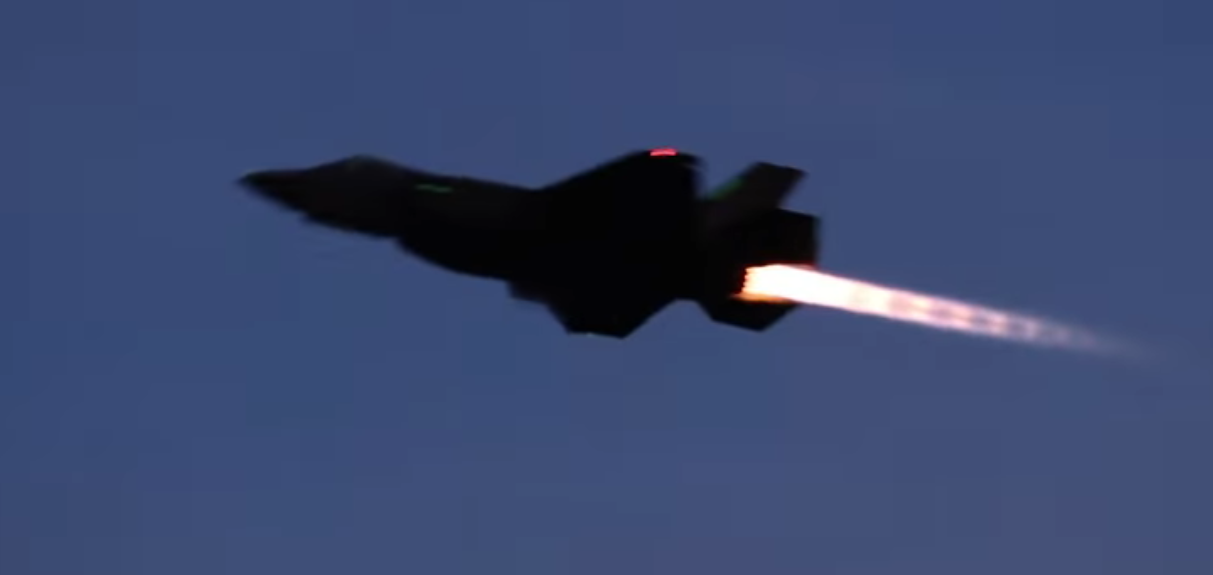The Lockheed Martin F-35 Lightning II is high maintenance diva. And the United States taxpayers are its collective sugar daddy.
We, who pay our patriotic dues to Uncle Sam every April 15, may get flummoxed and frustrated with our noble, expensive mechanical bird starlet most of the time, but when the F-35 stuns as it gracefully soars through a colorful twilight vista, its burners like an enormous flying torch blasting a soft vivid hue that shows as an inspiring,contrasting tint on a sky that finds itself on the precipice of night — as it does in the following footage — it’s oh so hard to stay mad.
This was taken at Luke Air Force Base in Maricopa County, Arizona recently while a bunch of the state-of-the-art aircraft took part in night training sorties. The singular beam of the fighter’s backside (or its “plume”) stems from its F135 turbofan engine, a piece of engineering that has been shrouded in much dissension.
This from Foxtrot Alpha:
Like so many other things F-35, the jet’s powerful engine has been mired in controversy. Originally, there were supposed to be two engines available for the F-35, much like the choices customers of the F-16 and F-15 have today. This alternative engine built by General Electric (the other is built by Pratt And Whitney) was cancelled in the first term of the Obama Administration in order to save money, although the vast majority of its development was behind it.
The canceling of General Electric’s F136 engine became a major issue once again when an F-35 caught fire on the runway in the summer of 2014. The fleet was subsequently grounded for months, and eventually the grounding was partially lifted but harsh flight restrictions remained in place. Once the reason for the engine fire was identified and measures were put in place reduce the risk of it happening again, the fleet returned to the air without restrictions.




































